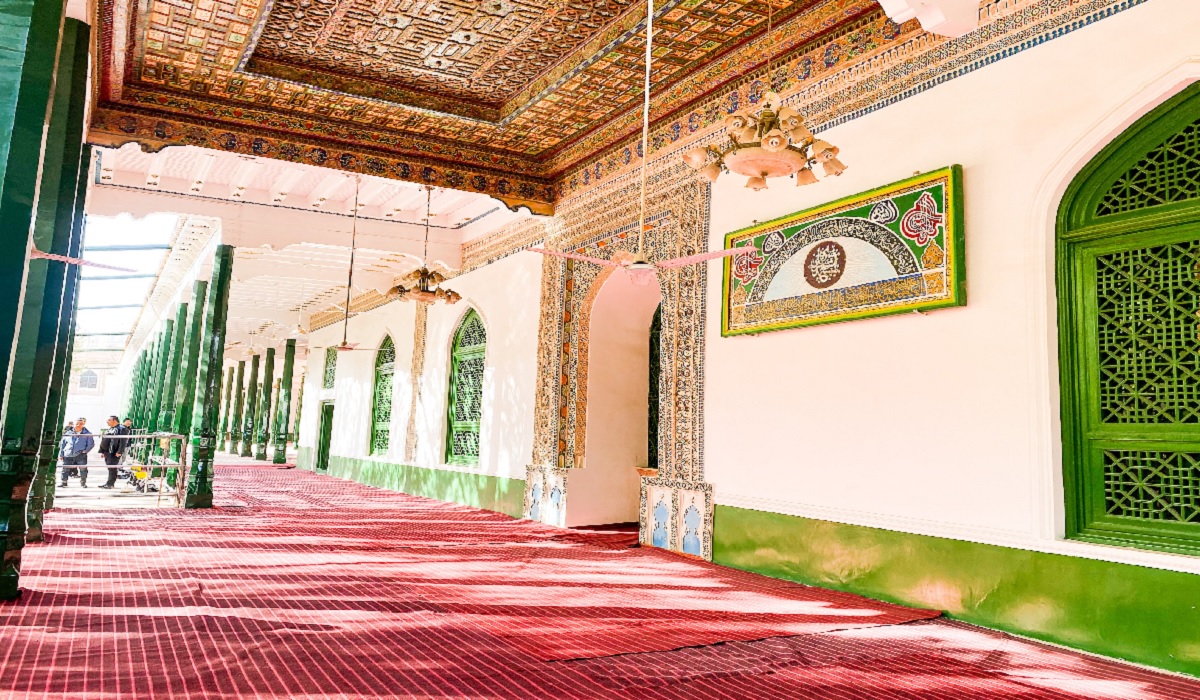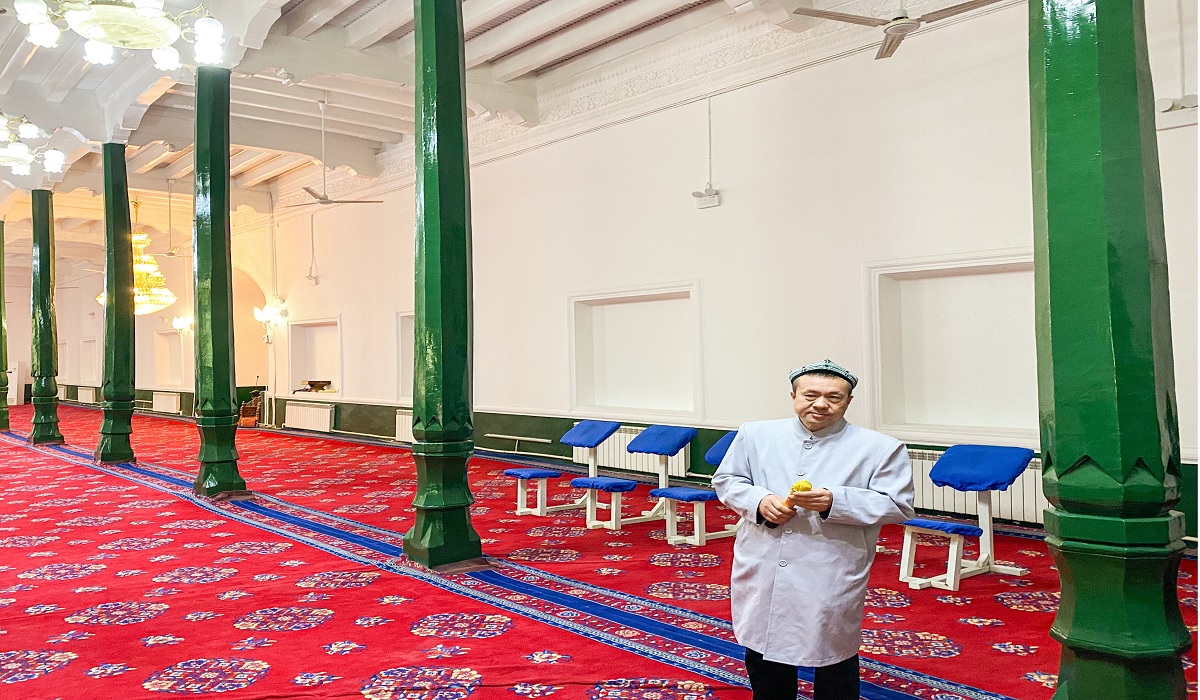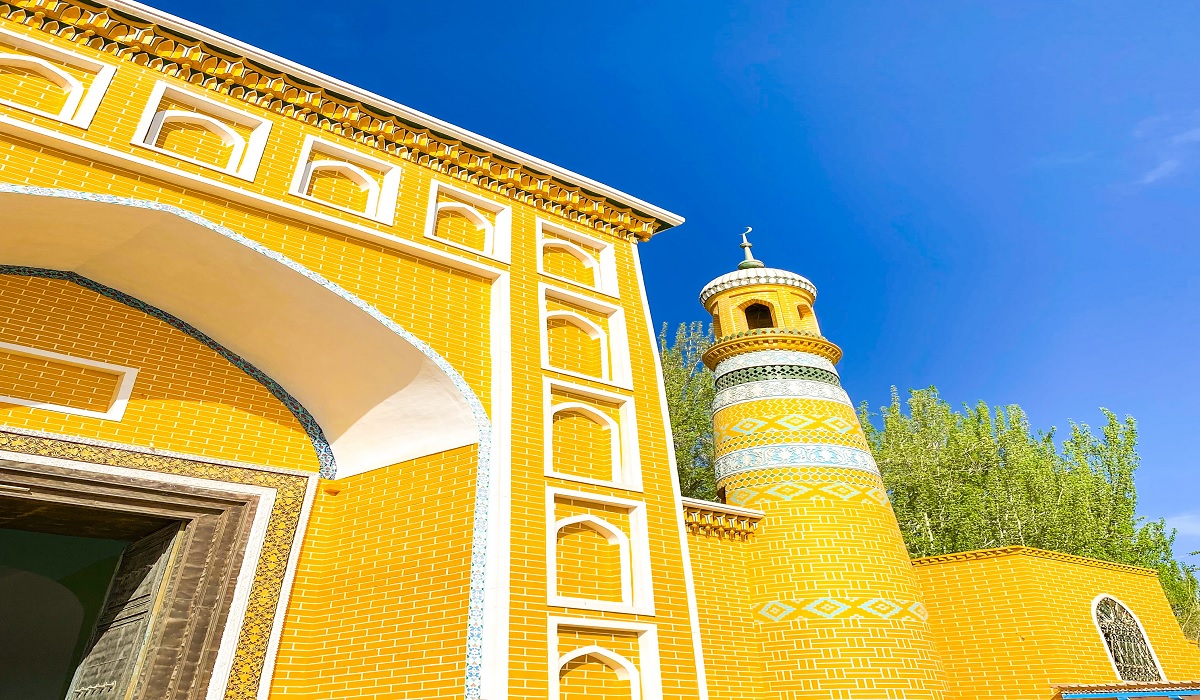In the historic city of Kashgar, Xinjiang, China, the Id Ka Mosque stands as a symbol of religious devotion and cultural magnificence. Established in 1442, this architectural wonder has a rich legacy spanning over five centuries, making it one of China’s oldest and most valued mosques.
Occupying a vast expanse of 1.69 hectares, the Id Ka Mosque stands as a reflection of Islamic grandeur, characterized by its imposing structures and profound religious significance. The building complex, constructed in grand Islamic style, features a majestic gate tower, a spacious courtyard, a teaching hall, and a radiant Hall of Prayer.

Arabic scripture adorns the surroundings outside the main prayer hall of Id Ka Mosque, evoking a sense of sacredness and cultural richness.
As visitors pass through the Tower Gate, they are greeted by the sight of a sprawling courtyard enveloped in tranquility. Lined with 18 teaching halls on its south and north sides, the courtyard is adorned with towering poplar trees, flourishing pines, and majestic cypresses that provide ample shade.
The Hall of Prayer comprises three distinct sections: the Inner Hall, the Outer Hall, and the Hall Entrance, all elevated over a meter above ground level. The roof of the Outer Hall is upheld by 140 light blue wooden pillars, meticulously arranged in a grid pattern, and embellished with intricate carvings and captivating artwork. Adorning the brick gate tower, which faces Id Kah Square, are elaborate flower-pattern carvings, predominantly in shades of green, adding to the mosque’s aesthetic.
With a capacity to accommodate up to 20,000 worshippers, the Id Ka Mosque holds a prominent place in the hearts of the faithful. Its name, meaning “festive” in Persian, evokes a sense of celebration and reverence among Muslim worshippers.
Imam Memet Jume, the spiritual leader of the mosque, emphasizes that, “Religious activities at the Id Ka Mosque are fully protected by Chinese law.” Furthermore, though the support of the government, individuals aspiring to deepen their understanding of Islam receive encouragement, another indication of China’s commitment to religious education and cultural preservation.

Imam Memet Jume, the spiritual leader of Id Ka Mosque, standing in the main prayer area.
Beyond its religious significance, the Id Ka Mosque serves as a guiding light of unity and harmony, fostering trust among diverse ethnic groups. The appointment of the Imam, a respected and long-standing tradition, ensures the collective endorsement of the local community for a leader with a high-level of Islamic knowledge and wisdom.
Architecturally, the mosque embodies a harmonious blend of Central Asian, West Asian, and Chinese influences, evident in its intricate designs and ornate details. From its towering minarets to its intricately carved pillars, every facet of the Id Ka Mosque narrates a tale of cultural richness and architectural magnificence.
As a testament to religious heritage and cultural splendor, the Id Ka Mosque continues to stand as a cherished symbol of reverence and unity, inviting worshippers and visitors to experience its timeless grandeur and spiritual serenity. Amidst the bustling streets of Kashgar, this sacred sanctuary remains an oasis of peace and reflection, embodying the beautiful spirit of faith and cultural harmony in Xinjiang.









